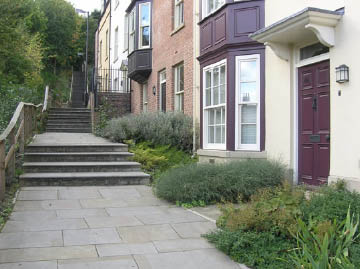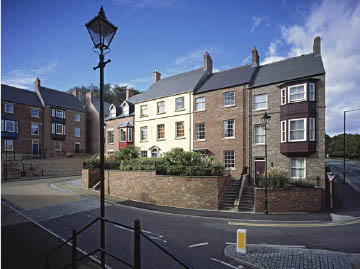It can be done; it has been done

Brand Spanking New: The Highgate project is one of the many success stories of the United Kingdom’s commission for the built environment. photographer Ivor Samuels
It made little impact at Friday’s breakfast.
But that was hardly surprising, given the privilege of being the first residents to preview a provocative video that proposes Rodney takes a leaf out of the Lake District’s book and determinedly protect the beauty of the natural landscape, rather than allow the district to be swamped with same old, same old development.
Urban designer Andrew Trevelyan explained that he had commissioned the video to promote discussion—particularly timely as the district council is in the process of reviewing Vision Rodney.
The breakfast rounded out with an update by Dr David Bergin following the successful establishment of the second and third open-ground indigenous plant trial plots, at Silverdale the day before. David’s adult and late teens children—Brendon, Michael and Natalie—who had laboured setting out and planting the trial, were also at the breakfast.
So inevitably, the four-page Sustainable Design, Climate Change and the Built Environment document received little attention.
The document was branded CABE, which many may have assumed was a firm of consultants.
But it is too erudite, too authoritative, too frank about that which stands between us and a rich, sustainable built environment, to be the work of a few consultants.
And there it is on the back cover—along with its address, which is in London—CABE is an acronym for Commission for Architecture and the Built Environment.
The obligatory acronym is possibly a deliberate positioning away from any suggestion of nanny state-ism.
(Speaking of –isms, it was probably inevitable that a term bandied about in Britain at Harold Wilson’s cost would later prove irresistible in the context the female Labour prime minister of Aotearoa.)
Wikipedia describes the Commission for Architecture and the Built Environment as ‘an executive non-departmental public body of the UK government, established in 1999 … funded by both the Department for Culture, Media and Sport and the Department for Communities and Local Government’.

Add One All-Electric Vehicle: The Highgate project accommodates motor vehicles without being dominated by them. photography David Millington Photography
A quick perusal of any one of the many inspirational projects on display on the commission’s website, and any soul with a crumb of compassion for the Mahurangi will be calling for an equivalent agency in Aotearoa.
However, the United Kingdom’s commission for the built environment is a £10 million-a-year operation advising on £13.5 billion of public expenditure. It would be far more affordable to use as much of that body of work as is relevant, rather than re-invent the entire wheel—leaving an antipodean organisation to concentrate on authentic, indigenous intepretations and implementations, or possibly produce supplementary concepts—restoring indigenous forest and building sustainably within it, is particular challenge.
Rodney is the fastest growing district, ahead of Queenstown in absolute terms.
This means either:
- blanketing rural and coastal land with low to medium density housing, at an ever-increasing rate, or
- identifying agreeable forms of development of a greater density.
To rely on development being prohibited—or crippled by diminishing supplies of petroleum—to protect landscape values is fraught, even arguably delusional.
